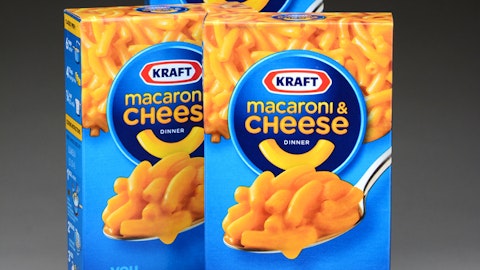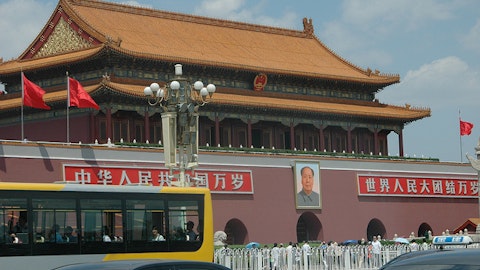The bottom line is investors shouldn’t pay attention to short-term hedge fund returns. We look for hedge funds with strong long-term track records that still manage money the same way they did 10 years ago. Tiger Global managed to generate an annualized return of 20% over the last 15 years. We analyzed Tiger Global’s historical 13F filings between 2002 and 2012. Our analysis showed that an investor who invested in Tiger Global’s top 5 stock picks 2 months after the end of each quarter would have outperformed the market by an average of about 10 percentage points per year. Warren Buffett’s top 5 picks during the same period performed worse, so the average performance of Tiger Global’s picks is really exceptional. This doesn’t mean that this strategy is an easy strategy to invest in. In our back tests this strategy lost 15.8% in September 2002, more than 17% between August and October 2005, 23% between January and February 2008, and more than 49% between June 2008 and January 2009.
As you can see a decline of 9% in the span of 3 months isn’t really unexpected. A concentrated portfolio will definitely be extremely volatile. What made things really worse for Tiger Global this year is the poor performance of its short book and the leverage it used. When a hedge fund’s long and short positions go against it, the leverage used by the hedge fund magnifies it losses. When a hedge fund makes money from both its short and long positions, the leverage used by the hedge fund will magnify its gains. This is totally expected and normal.
If you aren’t comfortable with blindly investing in Tiger Global’s top picks, another alternative is to find out its investment thesis in these stocks and determine whether their research and conclusions are sufficient enough to take the risk. From time to time we share hedge funds’ investment thesis in some of the stocks. Here is an excerpt from Tiger Global’s 2015 Q1 investor letter which laid out the fund’s investment thesis in JD.com Inc. (JD):
“JD is levered to “retail leapfrogging” in emerging markets, which we believe is one of the most powerful secular themes globally. Given the limited retail footprint and relatively small size of leading offline retailers, e-commerce companies have been able to achieve dominant positions in certain developing markets. Moreover, the lack of reliable third party logistics companies in countries like China and India has forced online players to build their own last mile delivery networks, creating a significant competitive advantage. Over the coming decades, we expect e-commerce to capture the majority of growth in nongrocery retail spending in developing markets.
Founded in 2004, JD has two primary business units: a retail business and a third-party marketplace business. In its retail business, JD purchases goods from suppliers, holds inventory in its warehouses, and delivers goods to consumers after they place orders. JD’s marketplace offers a curated selection of goods from approximately 60,000 third-party vendors monitored by JD to minimize fraud and counterfeit. In 2014, nearly 100 million consumers placed over 1.1 billion orders on JD, resulting in approximately $42 billion of gross merchandise value (“GMV”), an increase of more than 100% over the prior year. Today, JD is China’s largest fulfillment-based retailer, online or offline, by almost 3x and is larger than its next 10 fulfilled e-commerce competitors combined.
JD benefits from a virtuous cycle that originates with quality products and premium customer service. As transaction volumes grow, the company’s competitive advantage should widen as costs per order decline and the company’s product offering broadens. In 2014, the company delivered over 680 million orders at a cost of roughly $2.00 per order, with approximately 80% delivered within 36 hours. This compares to an estimated cost per order of over $4.50 for Amazon in the US, which relies on third party logistics partners like UPS and FedEx for last mile delivery. One of the factors driving JD’s low delivery cost is China’s tremendous population density, enabling the company’s average delivery employee to complete 44 orders per day, roughly 20% more than UPS and FedEx average in the US. JD also has significantly lower fixed costs than offline retailers that operate hundreds or thousands of retail locations, each staffed with sales and service employees.
Another crucial operating metric is inventory turns. Leading offline retailers turn inventory between five and six times per year; JD, on the other hand, turned its inventory approximately 10 times in 2014. Faster inventory turns are critical, particularly in categories like consumer electronics where prices can erode rapidly as newer products are released. Additionally, our recent surveys of Chinese consumers suggest the most important factors influencing online purchases include product quality, speed of delivery, and customer service. JD is the highest-rated among the major online platforms in these areas. As Chinese consumers have become more sophisticated, these three variables have increased in importance relative to breadth of selection and price.
While the stock has performed well and expectations have risen, we continue to believe that JD is attractively valued over the long term and well-positioned within a large and growing e-commerce market. As with other rapidly growing retail businesses, we expect JD’s incremental margins to increase with time as the company leverages fixed costs, resulting in attractive net margins once the company reaches scale. Between 2014 and 2022, we expect Chinese e-commerce penetration to roughly double
from 20% to 40%, implying an addressable market size of approximately $1.3 trillion in 2022. Given JD’s leading position in fulfilled e-commerce and the scale of its logistics network, we believe the company can grow its market share meaningfully over time. If JD is able to double its e-commerce market share from 10% to 20% over the next seven years, and our assumption about e-commerce penetration is correct, the company could represent a percentage of the addressable retail market in China
comparable to Walmart in the US.”
There you have it. Tiger Global sees JD.com Inc as a long-term bet on China’s retail market. Short-term declines were triggered by macro concerns. It is up to you to decide whether short-term declines are triggered by macro concerns that are temporary in nature or the beginning of a long-term trend that’ll cripple China’s emerging consumers.





